|
On Saturday, August 10, 2024, the Italian Community of St Louis is excited to host the 7TH ANNUAL FERRAGOSTO from 5pm to 11PM.
TICKETS: $10 PER ADULT Children 12 and under are FREE How to pay: You can pay in cash at the event or send payment via Venmo to Giovanna Leopardi, Treasurer of the Italian Community: @Giovanna-Leopardi or call: (314) 566-3873 Besides music and entertainment, Italian wines, and beer will be provided as well as traditional pastas and meats made by Chef Alessandro Valentino. Our DJ has a wonderful array of classical Italian and modern music. Our venue, the Grand Enterprise Pavilion at Shaw Park is located at: 27 S Brentwood Blvd, Clayton, Missouri 63105. Ferragosto is an ancient tradition going back over 2,000 years. It is the largest Italian summer festival of the year. Today, we invite you to taste and experience contemporary Italian cuisine and culture. If you are interested in sponsoring the event, or for additional information, please reply to: [email protected] Thanks to our volunteers: Alessandro Valentino, Tiziana Orsini, Giovanna Leopardi, Vito Alu, Michael Cross, Carlo Sanfilippo, Scott Hoff, Adriana Hermida, and Umberto Gradinetti
0 Comments
MARCO BALLICO Il Piccolo Dagli Stati Uniti all’Albania e di nuovo agli Stati Uniti, nello specifico il Missouri, Midwest. La giunta Fedriga prosegue nel percorso delle relazioni internazionali mirate a presentare le opportunità di investimento in Friuli Venezia Giulia. Reduce dalla due giorni di Tirana, occasione per un confronto anche sulle sinergie possibili in materia di turismo, energia e cultura, il presidente della Regione ha incontrato ieri a Roma una nutrita rappresentanza del Missouri, guidata dal governatore Michael Parson. La premessa sono le precedenti iniziative per mettere in vetrina il nostro territorio negli Stati Uniti. Nell’aprile scorso, in particolare, Fedriga si era tra l’altro seduto al tavolo con il Gruppo esponenti italiani, il sodalizio americano del quale fanno parte alcuni tra i più rilevanti imprenditori e professionisti di nazionalità italiana residenti a New York.
Alle spalle anche la sottoscrizione dell’Accordo di collaborazione tra le Regioni italiane e la National italian american foundation (Niaf), la partnership economica sul versante atlantico. Il nuovo passo è direzione Missouri, con il dialogo aperto nella sede della Regione a Roma. A fianco del presidente Fvg, gli assessori alle Attività produttive e turismo Sergio Bini, al Lavoro, formazione e ricerca Alessia Rosolen, alle Infrastrutture e territorio Cristina Amirante, nonché numerosi esponenti del mondo produttivo e accademico: il presidente di Confindustria Fvg Pierluigi Zamò, il presidente di Confindustria Friuli Venezia Giulia e Alto Adriatico Michelangelo Agrusti, il vicepresidente di Confindustria Udine Piero Petrucco, il vicepresidente della Camera di Commercio Venezia Giulia Massimiliano Ciarrocchi, il segretario generale della Camera di Commercio di Pordenone-Udine Maria Lucia Pilutti, il rettore dell’Università di Udine Roberto Pinton e il direttore della Sissa Andrea Romanino. Necessaria la reciproca conoscenza tra le due realtà. Ad animare la sessione successiva alla parte istituzionale sono così state le presentazioni ad opera dell’Agenzia Lavoro e SviluppoImpresa e di Missouri Partnership. Per la delegazione regionale è stata l’opportunità di venire informati su uno Stato che rappresenta uno snodo fondamentale per le rotte commerciali – a metà strada tra l’Oceano atlantico e le Rocky Mountains, attraversato dai fiumi Mississippi e Missouri – al punto da essere soprannominato “Gateway to the West”. Significativo, inoltre, l’incremento dell’import dall’Italia che, rispetto al 2022, ha segnato l’anno scorso un +53% complessivo, per un totale di 680 milioni di dollari: un interscambio commerciale che ha interessato soprattutto la componentistica legata ai trasporti (+2.600%), gli equipaggiamenti elettrici e gli elettrodomestici (+53%), la siderurgia (+50%) e l’elettronica (+29%). Segnali di forte sviluppo che devono tradursi in opportunità per le imprese, ha sottolineato Fedriga nel ribadire che la «vicinanza tra Fvg e Stati Uniti fa leva non solo sull’attrattività di un territorio, quello regionale, che intende sfruttare appieno sui mercati esteri le proprie potenzialità di cerniera tra il Mediterraneo e l’Europa continentale e balcanica, ma che rappresenta al contempo in modo esplicito la volontà dell’amministrazione di alimentare, attraverso partnership strategiche, quel dialogo tra realtà democratiche la cui indifferibilità, alla luce del difficile contesto geopolitico, appare evidente». After partnering with The Magic House for the year-long Ciao Bambini exhibit, the Italian Community of St Louis is partnering with another major cultural institution in St Louis, the Missouri History Museum for an event called Italian American STL as part of the museum's Summer Family Fun Series. The event takes place Wednesday, June 12, 2024 from 10am-1pm and is geared towards families and children 12 and under.
The resounding success of Ciao Bambini, which opened September 2023, was of major importance to the growth of the Italian Community of St Louis, an organization which represents not only Italian expats but also Americans of Italian descent and simply anyone who appreciates the Italian language and culture. The event at the Missouri History Museum is free and open to the public and is centered around families and children 12 years old and under. Activities include Italian Storytime with Italian teachers Giovanna Leopardi and Cettina Gabriele of the St Louis Italian Language Program, touch table items invented by Italians and Italian-Americans, an arts and crafts table, opportunities for children to make pasta and pizza, as well as a St Louis - Bologna Sister Cities table created by Elizabeth Bernhardt, a professor of Italian at Washington University who has lived in Bologna for 20 years. The Hill neighborhood will be represented by the Italia-America Bocce Club, which will be present at the event with volunteer members teaching children how to play this historic game which has its origins in Northern Italy. Kids will be able to meet and play soccer with Simone Valentino, star forward for the Truman State Bulldogs. Simone is the son of Alessandro & Tiziana Valentino, longtime residents of St Louis who came from Italy in the early 2000s. The Valentino family has been very active in the Italian community since it was founded in 2017. The event has Italian moms and dads from the St Louis area volunteering to help organize the event. Thanks to the following volunteers: Federica Bertolini Francesca Fontana Carlo Sanfilippo Giovanna Leopardi Paolo & Concetta Gabriele Elizabeth Bernhardt Maria Clea Annecchiarico Michael Cross Adriana Hermida Dan Drago Tom Bottini Simone Valentino For more information on the event or to assist in volunteering, please send an inquiry to Michael Cross: [email protected] MARTINA DI IORIO Editor di CiboToday A pochi chilometri dal confine italiano si sviluppa una delle terre più ricche di storia nonché piene di gemme gastronomiche. Parliamo dell’Istria, regione croata che dopo Trieste si getta nel mare Adriatico, conosciuta per le sue spiagge così come per la ricchezza paesaggistica. Durante il periodo di Pasqua l’Istria, da Parenzo a Cittanova, diventa palcoscenico di fiere di paese, eventi e tradizioni gastronomiche dal forte valore folkloristico. Come la colazione pasquale servita su grandi tavoloni nelle piazze delle cittadine costiere dove si servono le tipiche pinze istriane. Un pane dolce farcito con uvetta, con un’incisione a forma di croce in mezzo e decorata con foglie d’ulivo. Una tradizione quella della pinza che trova anche spazio a Trieste e nelle città di confine, insieme ad altre varianti.
In lingua croata si chiama pinca ed è un lievitato molto semplice a sottolineare le sue origini umili e contadine. Come tanti dolci e ricette di questo periodo, collegandosi alla simbologia cristiana e alle credenze popolari rurali, la pinza veniva sfornata proprio come buon auspicio per il raccolto. Un simbolo di rinascita, legandosi alla nuova vita e dunque alla resurrezione di Cristo. La tradizione inoltre vuole che la sua forma, rotonda, possa ricordare la spugna con cui venne costretto Cristo a bere dell’aceto durante il martirio. La pinza è una pagnotta dolce, fatta con un impasto ricco di farina, uova, zucchero, latte, burro e talvolta aromatizzata con scorza di limone, scorza d'arancia o vaniglia. L'impasto è arricchito con uvetta, scorza d'arancia candita o anche di mandorle, che gli conferiscono un sapore dolce e leggermente fruttato. Durante la mattina di Pasqua nelle cittadine istriane si organizzano tavolate dove il dolce pasquale, circondato da foglie di ulivo, viene tagliato e offerto ai passanti. Ma la colazione di Pasqua istriana non comprende solo la pinza. Infatti molto simili, ma differenti per la forma, le jajarice ovvero delle trecce di pane sulla cui parte superiore viene inserito un uovo. Nella parte settentrionale dello Zagorje troverete invece il vrtanji, un tipo di pane salato fatto con l’acqua rimasta dalla cottura del prosciutto di Pasqua; oppure i bagel della Slavonija che sono dei semplici panini fatti solo da tre ingredienti come uova, farina e un po’ di sale. Tutte preparazioni che il giorno del venerdì santo vengono fatte benedire portandole con sé a messa. Anche a Trieste e al confine della Venezia-Giulia si mangiano le pinze (e non solo). Non è una novità come questi due territori, l’Istria da un lato e la Venezia-Giulia dall’altro, abbiano da sempre una fortissima connessione. Non solo storica e politica ma anche gastronomica. Così le nostre pinze le ritroviamo anche a Trieste e dintorni, proprio nel periodo delle festività religiose. La preparazione è pressoché identica: una lunga lavorazione e lievitazione poi posta a cottura dopo aver inciso un taglio a croce sulla sua sommità. Nella versione triestina mancano le uvette e viene servita come antipasto da accompagnare con spalla cotta, prosciutto e cren. Da non confondere con il presnitz, che si trova anche a Gorizia: una ciambella di pasta sfoglia arrotolata ripiena di prugne, fichi, uvetta, cioccolata, aromatizzata con rum e cannella. Senza dimenticare come proprio in questo territorio si è sviluppata una primordiale forma di colomba, come abbiamo sottolineato in questo articolo, antenato del lievitato principe di queste feste. MEERA NAGARAJAN Riverfront Times Bacaro, the new cicchetti and aperitivo bar from the team behind the ever-popular Noto Italian Restaurant, a Sauce Best New Restaurant of 2020, is set to officially open on Wednesday, March 6, after a soft opening last weekend. Bacaro is in the same building as Noto at 5105 Westwood Drive in St. Peters, just downstairs and toward the back of the main restaurant.
The upscale space is decked out with Italian marble, beautiful stone-topped tables, warm lighting and enough space for 75 inside, with an upcoming patio that should have room for an additional 25 guests. Their vision was to create a Venetian-inspired aperitivo bar — people sipping on spritzes and Amari and snacking on cicchetti, or snacks. The beverage portion of the menu was executed by bar manager Travis Shook, who took inspiration from co-owners Kendele and Wayne Sieve’s vision for Bacaro. The cocktail list has a range of approachable drinks like the blackberry bellini with blackberry puree, Amara, spiced simple syrup and prosecco. (An off-menu white peach version is also always available.) There’s also a creative Caprese martini with sun-dried tomato-infused vodka, bianco vermouth, radicchio-basil-balsamic shrub and saline for a more savory option. The Venetian comes with a mix of Contratto red bitter, Antica Rosso vermouth, Contratto Rosso vermouth and Bordiga gin. “It’s like a more bitter and intense Negroni. It’s popular in Venice; we discovered that every hotel and little place had their version of this, vermouth or vermouths and bitter liqueur, and we added gin for taste,” Kendele Sieve says. Of course, there are spritzes, and you can even create your own spritz by selecting from a list of aperitivos like Aperol, Pilla Select (similar to Campari) or Italicus (flavored with bergamot), to name a few. For riffs on classic cocktails, look for a vanilla-infused Knob Creek 9-year whiskey paired with a 25-year-old balsamic in their Italian Old-Fashioned, which gets topped with Frizzante club soda, orange bitters and Demerara brown sugar syrup. The Bacaro Negroni comes with espresso bean-infused gin, Pilla Select apertivo, antica rosso vermouth and nocino liqueur, which is made from green walnut and orange bitters. Shook, who started at Noto just four months ago, wanted to help launch Bacaro particularly due to his interest in making amari — like his Robarbaro, featuring a Chinese rhubarb that carries a smoky note, plus other ingredients like toasted white oak, cherry bark, cinnamon, elderberry, elderflower and other light florals, for a total of 19 ingredients. Another housemade option on the list that he helped create is the Felsina, which is made with apricot, honey and bitter orange peel for a more citrus-forward profile. He also worked on a house red bitter, similar to an Aperol but without any artificial coloring, just spirits, roots and sugar for a more pared down mix. Also, look for familiar bottled options of amari like Amaro Nonio, Strega, Vecchio Del Capo and new-to-market products like Centum Herbis, an herbaceous, mint-forward amaro on the shelf. Rounding out the beverage menu are Italian sodas like an Italian cola, which comes in a beautiful glass bottle, as well as other flavors like lemon and blood orange. A trio of NA cocktails are available, including the Danielle, with Lyre’s Dry London spirit non-alcoholic gin that they infuse with rosemary then mix with lime, cinnamon simple syrup and New Orleans bitters, which carries notes of star anise, wild cherry and hibiscus — all garnished with a sprig of rosemary. A selection of Italian beers like Birria Morretti and Poretti lager are also on the menu. The food menu focuses mainly on cicchetti, snack-style small plates, and was a collaborative effort between Wayne and Noto executive chef Justin McMillen, who joined the team early this year. Here, similar to Noto, which is certified by the Associazione Vera Pizza Napoletana in Naples, commitment to sourcing unique and special ingredients both domestically and from Italy is on full display. This commitment is evident in the Armatore brown anchovies that come delicately draped atop hard-boiled eggs and an herbed aioli; these egg bites taste like a Caesar salad with anchovies caught in the Tyrrhenian Sea just off Italy’s Amalfi Coast. Look for more eggs on the menu in the ouvo cicchetti section, including a version topped with caviar or salted cod. Another specialty from the Armatore brand is the wild-caught blue fin tuna, which gets folded with a dill-caper aioli and topped with fresh arugula and sliced, boiled egg, served on white Pullman loaf in the tuna tramezzini sandwich. You’ll also find a selection of dips, including the whipped ricotta dip that’s topped with extra virgin olive oil, cracked black pepper, marinated olives and fresh herbs like chive, dill and parsley; or the verdura dip with sun-dried tomato and cannellini bean hummus, a fiery orange base that’s topped with a roasted and marinated mixture of vegetables and garnished with herbs. Both are served with crostini and are substantial snacks. Light snacks like the adorable spritz setup comes with potato chips, marinated olives and Taralli or round breadsticks, which is the perfect trio when sipping on a classic Aperol spritz. “We’re tapped into resources so we can buy more unique things,” Wayne Sieve says. Their mortadella is one such find, a domestic version made by an Italian family in New York that is served on a crostini with whipped ricotta and topped with toasted pistachios. The menu features cheese and charcuterie boards as well. Cheeses like a mild mountain gorgonzola from the Alps, a Toma riserva, Ciresa fontina and meats like Coppa, porchetta, mortadella or bresola are also offered. Whether you’re popping in for drinks ahead of a Noto reservation or going to Bacaro just for spritzes and snacks, it is sure to be a popular destination as it brings a unique, Venetian-inspired experience like nowhere else in the St. Louis area. Bacaro is open 4 to 10 p.m. Wednesday through Saturday and does not take reservations. Noto Italian Restaurant owners to open Venetian-inspired cicchetti bar Bacaro in St. Peters2/22/2024 IAIN SHAW Sauce Magazine The team behind Noto Italian Restaurant will open Bacaro, a Venetian cicchetti bar, in early March. Bacaro will be located in the same building as Noto at 5105 Westwood Drive in St. Peters.
The restaurant borrows its name from the Venetian taverns where patrons sip on wine or aperitifs accompanied by cicchetti, which are essentially Venetian-style tapas. Indeed, it was a trip to Venice last year that inspired Noto owners Wayne Sieve and Kendele Noto Sieve to create the concept in their own little corner of the world. “We wanted to come up with a concept of an aperitivo bar where people can come and have small bites, have spritzes, have Italian wine and just casually hang out and eat,” Kendele said. Bacaro is based out of a lower level space that Kendele said is “pretty much underneath” Noto. The space was formerly used as a garage, but has been completely transformed, with an indoor patio extension and new interior features. “We made it look old, added a lot of textures, we have marble and stone and tiles, so the vibe is very rustic, but modern at the same time,” Kendele said. Bacaro will seat around 75 guests inside, and an outdoor patio will soon be added to accommodate a further 20 guests. With the design of the space, Kendele and Wayne said they’re not trying to recreate the style of an actual bacaro in Venice. Instead, the decor pays tribute to the city itself, incorporating identifiable Venetian elements like Venetian masks, photos of Carnevale, the Rialto Bridge and St. Mark’s Square, stone walls and a graffiti wall that echo the streetscapes of Venice. “There’s definitely elements that will be very familiar,” Wayne said. The food and drink at Bacaro will be a different matter. “We’ve matched our drink program and our food program to be exactly what you would do or what you would get out of a bacaro in Venice,” Kendele said. Wayne Sieve is developing the menu alongside Noto executive chef Justin McMillen, the former culinary director of Niche Food Group, who also operates his Elsworth Supper Club pop-up with Amelia McMillen. The menu will feature around eight crostini-style cicchetti options, small bites served in portions of three. Kendele said her personal favorite on the Bacaro menu is the mantecato, a creamy, salted cod-based cicchetti that is a staple in Venice. Another traditional Venetian option is mortadella with ricotta and pistachio garnish. Bacaro’s menu will also feature a few tramezzini, a sub-category of cicchetti. These little triangular sandwiches are reminiscent of an afternoon tea sandwich, served on soft white bread with the crusts cut off and with a variety of fillings like Venetian-style tuna salad or prosciutto. Salads, charcuterie and a couple of desserts will also be offered on the menu, adding up to a total of around 15 to 20 items. Kendele said they’re still working out what desserts to put on the menu, but they’re not lacking options. “We might do a fragola, which is a strawberry and limoncello trifle, we’ll make our sponge cake, we’re also debating if we’re going to do panna cotta, gelato or sorbetto or maybe another pastry,” she said. The experience at Bacaro is designed to be adaptable to what you’re in the mood for. “If you want to make it a meal, you can easily make it a meal,” Wayne said. Equally, if you want to stop in for a glass of wine and some cicchetti before or after a pizza at Noto, Bacaro’s menu is amenable to that too. Spritzes will feature prominently at Bacaro, with eight spritzes on the menu. Travis Shook is creating the drinks, including a selection of seasonal cocktails. “It’ll be more of a mixology menu upstairs at Noto, where downstairs here at Bacaro will be more spritz, wine, Italian beer and then a small cocktail menu,” Kendele said. A sprtiz and cicchetti pairing option will also be offered. “Everything is definitely very much to be enjoyed with a spritz or amari with the cicchetti,” Wayne said. The spritzes come with an order of potato chips, another tradition in Venice and across northern and especially north-eastern Italy. Wayne and Kendele are keen to differentiate between the northern and southern Italian culinary traditions that each of their restaurants represents. “We’re keeping the southern Italian amari upstairs, and then down here for Bacaro, it’s more northern,” Kendele said. The opening selection at Bacaro will include 10 to 12 amari, with names like Bordiga, Meletti and Amaro Montenegro represented. Shook is also working on creating Bacaro’s own amaro in-house – that won’t be ready in time for opening, but it’s in the pipeline. “I don’t know if it will be readily available all the time, but it could be something we offer once the batch is ready,” Kendele said. As well as serving its own crowd, Bacaro will also provide a backup option for anyone who can’t get a table at Noto, which is essentially reservation-only with very limited space for walk-in guests. “We've been very fortunate with Noto, it's been successful and we couldn't be more thankful or grateful for that,” Wayne said. “We didn't intend for it to be reservation-only and that's just the way it's kind of been, it's always booked and that's a great thing. And we wanted to be able to still offer an extension, so [Bacaro] was a way for us to be able to offer walk-in guests that may not have a reservation a way to still experience what we do.” Bacaro is aiming for an early March launch, and will be open for dinner from Wednesday to Saturday each week. La Comunità Italiana di St Louis ha il piacere di invitarvi alla VI edizione del CARNEVALE VENEZIANO - la principale festa di Carnevale in stile Veneziano a St Louis.
Data: Sabato, 17 Febbraio, 2024 Luogo: 8195 Lackland Rd. St Louis, Missouri 63114 Location: La sala ricevimenti privata di Mr. & Mrs. Douglas Jost, con area di 2,500 sq. ft. e una pista da ballo professionale, è stata generosamente messa a disposizione per l'evento. Si ringrazia la famiglia Jost, tra i maggiori benefattori della Comunita' Italiana di St Louis, per l'ospitalità. 17.00 - apertura 17.15 - giochi e lavoretti per i bambini con le babysitters 18.30 - cena 19.00 - musica e apertura della pista da ballo 19.30 - premiazione dei costumi dei bambini 21.00 - premiazione dei costumi degli adulti 21.15 - lotteria 23.00 - chiusura ***Sono consigliati costumi in stile delle maschere Veneziane e tradizionali*** BIGLIETTI $10 - Adulti Partecipazione gratuita per bambini al di sotto di 12 anni Biglietti in vendita attraverso Venmo @Giovanna-Leopardi o chiamando Giovanna Leopardi: (314) 566-3873 Il biglietto include: due bevande alcoliche (vino o birra), due analcolici o bibite, pasta cucinata dallo Chef Alessandro Valentino, chiacchiere (crostoli) preparati al momento dallo Chef Alessandro Valentino. Per chi non lo sapesse, le chiacchiere sono il dolce tipico di carnevale. ***Tutti sono invitati a portare un piatto o una bevanda da condividere*** PREMI Miglior maschera/costume dei bambini (sotto gli 11 anni) Miglior maschera/costume ragazzi (12 - 17 anni) Miglior maschera/costume adulti (sopra i 18 anni) LOTTERIA Avremo una lotteria a favore della Comunità Italiana di St Louis con premi per tutte le età "PHOTO BOOTH" / SCENARIO PER LE FOTO A TEMA VENEZIANO Avremo un'area dedicata alle foto, con accessori e uno sfondo a tema del Carnevale Veneziano BABYSITTERS Buone notizie per i genitori che vogliono "staccare per la serata" ma portare i bambini! Avremo un'intera area dedicata ai bambini, con giochi, lavoretti (e.g. creare la propria maschera di Carnevale!) e tre babysitter dedicate e responsabili che intratterranno i bambini permettendovi di godervi la serata! RSVP: [email protected] Per informazioni o per sponsorizzare l'evento, contattare Michael Cross al numero (225) 239-3897 o mandare un'email a [email protected] You are cordially invited to St Louis' 6th Annual CARNEVALE VENEZIANO - the Premier Venetian Masquerade Party in St Louis.
When: Saturday, February 17, 2024 Where: 8195 Lackland Rd. St Louis, Missouri 63114 About the location: We are excited to have at our disposal Mr. & Mrs. Douglas Jost's private banquet hall with a 2,500 sq. ft. professional ballroom dance floor. The Jost family is a major donor of the Italian Community and we thank them for their generosity. 5:00pm - doors open 5:15pm - games/crafts for kids (babysitters provided) 6:30pm - dinner 7:00pm - music begins/dance floor opens 7:30pm - kids costume prizes 9:00pm - adult costume prizes 9:15pm - raffle 11:00pm - close ***Venetian style masquerade masks and/or costumes are strongly encouraged*** TICKETS $10 - Adults Free Admission for children 12 and under Purchase your ticket via Venmo @Giovanna-Leopardi or call Giovanna Leopardi: (314) 566-3873 Purchase of an adult ticket includes: two alcoholic beverages (wine or beer), two non-alcoholic beverages, freshly made pasta dishes made by Chef Alessandro Valentino, and made-on-the-spot chiacchiere (crostoli) by Chef Alessandro Valentino. For those who are unfamiliar, this is the famous dessert that is customary during Carnevale all throughout Italy. ***We highly encourage all to bring a dish or drink to share*** PRIZES Best Kids Mask/Costume (ages 11 and under) Best Teen Mask/Costume (ages 12 to 17) Best Adult Mask/Costume (ages 18 and older) RAFFLE We will have a raffle to support the Italian Community of St Louis with fun prizes for all ages. VENETIAN PHOTO BOOTH BACKDROP We will have a photo area with Venetian Carnevale backdrop and fun props. BABYSITTERS For those bringing your children but still want to "get away for the evening", have no fear!!! We have an entire area dedicated to kids with games and crafts (i.e.: kids can make their own Carnevale masks!) and three dedicated and responsible babysitters who will allow you to enjoy the evening! RSVP: [email protected] For inquiries or to sponsor this event please call Michael Cross at (225) 239-3897 or send an email to: [email protected] Please enjoy the Italian Community of St Louis "Year in Review 2023" video created by Michael Cross highlighting the events and special occasions we celebrated as a community. Our community is fastly growing because of you! Carissimi amici,
Il Natale porta con sé uno dei periodi più incantevoli dell’anno. Questo messaggio augurale vorrei che fosse un'iniezione di fiducia e di speranza. Ed è proprio in quest’ottica di sguardo fiducioso al futuro che mi auguro che il Natale possa dare a tutti la serenità di avviarsi verso il nuovo anno. Ringrazio tutti coloro i quali si sono relazionati con noi con atteggiamento collaborativo e produttivo. Auguri a tutte le persone che compongono la nostra Comunità e che si adoperano per renderla migliore. Auguri a coloro i quali sono in difficoltà e a tutti quelli che vivono in solitudine. Buon Natale ai nostri Bambini che sono una grande ricchezza, affinché possano accogliere solo gli esempi positivi per il loro futuro. Buon Natale ai nostri Anziani, custodi di una memoria storica che ci ha preceduti e generati. A nome mio e di tutta l’Amministrazione Vi auguro un sereno Natale e un Felice Anno Nuovo. Michael Cross Presidente La ricetta per preparare deliziose palacinke ispirate all'antica tradizione istriana ancora viva a Trieste, porta dell'Est Uova, latte, farina, zucchero e un pizzico di sale. La ricetta delle palacinke diffusa in Ungheria, Istria, Trieste e dintorni può essere considerata una versione light della classica ricetta francese. Questa infatti prevede che la pastella venga cotta in una padella dove è stato sciolto il burro (una noce ogni crêpe), mentre qui basterà un mezzo cucchiaino di olio di semi per pezzo. Le palacinke vengono poi solitamente farcite con marmellata di prugne fatta in casa, decisamente meno calorica delle salse a base di cioccolato che farciscono tradizionalmente le crêpes francesi. Se proprio siete amanti della tradizione d'Oltralpe, eccovi anche una versione delle squisite crêpes francesi leggera.
La ricetta delle palacinke Ingredienti per 4 persone 1 uovo 10 cucchiai di farina 1 bicchiere di latte 2 cucchiai di zucchero, 1 pizzico di sale olio di semi per ungere la padella Procedimento Unire le uova e lo zucchero mescolando bene con una frusta elettrica. Aggiungere un pizzico di sale, il latte e la farina fino a ottenere una pastella densa e corposa. Lasciarla riposare in frigorifero per mezz'ora, coperta con della pellicola trasparente. Ungere una padella antiaderente con mezzo cucchiaino d'olio di semi, scaldarla e versare una mestolata di pastella spargendola sulla superficie della padella, mantenendo lo strato leggermente alto. Cuocetela anche dall'altra parte e lasciatela riposare su un piatto piano in attesa di farcirla La farcia tradizionale delle palacinke Sebbene la Nutella vada sempre molto forte, la farcia ideale per le palacinke è la marmellata. Di prugne, mele o frutti di bosco, non importa, ciò che conta è che la si stenda per bene su tutta la superficie. Le palacinke verranno poi arrotolate o ripiegate e spolverate con zucchero a velo o cacao. I più golosi potranno concedessi una guarnizione a base di panna montata o cioccolato fuso. CHERYL BAEHR The Riverfront Times Biologist and molecular geneticist-turned-chef Dawn Wilson was well into her second career as a culinarian when a stint in Italy set her on the path to Vicini Pastaria. There, at a slow-food-focused restaurant in a small town in Tuscany, Wilson found herself immersed in Italian food culture — not simply the cuisine but the art of eating, drinking and how it fit into the larger food system and community. It was a formative experience and one she has deftly recreated at her delightful Lafayette Square restaurant and pastaria. Though she originally opened Vicini as a gourmet foods and pasta market in May 2020, she brought the spot up to her full vision last November, welcoming guests into a stunning, gilded dining room with touches of both Venice and Tuscany, where they are invited to relax over her outstanding handiwork. This includes a small rotating menu of delicious handmade pasta, including her specialty pici, usually done cacio e pepe style, along with panini, salads and not-to-miss Tuscan-style focaccia with some of the best pesto you'll have outside Liguria. Counter service and only open through the afternoon, it's the embodiment of Old-World magic.
Address: 1916 Park Avenue in Lafayette Square, St Louis, Missouri Telephone: 314-827-6150 Website: www.vicinipastaria.com AlVISE ARMELLINI Reuters Matteo Lepore compares project to save 12th century Garisenda tower from collapse to 10-year effort to preserve the tower of Pisa Work to prevent the collapse of a leaning medieval tower in the heart of the northern Italian city of Bologna will cost €20m ($21.5m) and take 10 years at least, its mayor has said.
Last weekend, the city unveiled a €4.3m (£3.7m) project to shore up the Garisenda tower – one of the city’s two towers that look out over central Bologna, providing inspiration over the centuries to painters and poets and a lookout spot during conflicts. Like the more famous Tower of Pisa, it has leaned for centuries, as the ground on which it was built gave way soon after construction. The area around it was cordoned off last month, due to rising concerns among experts about the risk of collapse. The Garisenda slants at 4 degrees, compared with 3.9 degrees for Italy’s more famous Leaning Tower of Pisa. “I think we will spend no less than €20m, maybe more” to restore and consolidate the tower, mayor Matteo Lepore was quoted by the ANSA news agency as saying in a press conference at Bologna city hall. “For the tower of Pisa, it took 10 years for the intervention and the [restoration] project. We have no reason to say it will take us less,” he said. The 12th century Garisenda is one of Bologna’s two towers, measuring 48 metres and standing next to the taller Asinelli (97 metres). The much-loved landmark is cited several times in Dante Alighieri’s Divine Comedy and Le Rime, and Charles Dickens wrote about it in his Pictures from Italy. The Garisenda was also referred to in Goethe’s Italian Journey. Italy’s civil protection agency has put out a “yellow” alert for the area around the two towers, meaning it is under watch, but thought to pose no immediate risks for people’s safety. There are two possible higher alert levels, “orange” and “red”. Lepore said in a debate earlier this month that the Garisenda tower had leaned since it was built “and has been a concern ever since”. It sustained additional damage in the medieval era when ironwork and bakery ovens were built inside. “We inherited a situation that over the centuries has caused this illness,” he said. The mayor has asked the government to petition to make the towers Unesco world heritage sites. Work to reinforce both towers has been ongoing since the 1990s. Preliminary work on the Garisenda tower will include creating a containment area to prevent any damage to nearby structures or harm to passersby from a “possible collapse”, the city said in a statement. Video cameras will maintain surveillance of the site. The Garisenda and Asinelli towers are named after the rival families who built them, believed to have been a way to compete over their power and wealth, and are located at what was the entrance to the city. The Garisenda was originally 60 metres tall but had to be lowered after it began to lean. FILIPPO NARDELLI www.viaggi-usa.it Proseguiamo con questo articolo dedicato al Missouri il nostro tour lungo gli Stati della Route 66. Con questa serie di articoli non vogliamo fornirvi una guida dettagliata con indicazioni passo passo sul percorso da seguire (a proposito: sapete come pianificare un itinerario sulla Mother Road?), quanto piuttosto aiutarvi a farvi un’idea di quello che potrete trovare lungo il tracciato, in modo da poter organizzare il vostro on the road in base alle attrazioni che riterrete più affascinanti. Le principali attrazioni che incontreremo lungo il percorso della Route 66 sono presentate qui da est a ovest. Se per qualche motivo preferirete muovervi da ovest verso est non dovrete far altro che partire dalla fine! Cosa vedere lungo il percorso Lo stato del Missouri nel corso della storia degli Stati Uniti è famoso per essere stato il punto di partenza per le spedizioni verso l’Ovest fra cui i noti Overland, Oregon e Santa Fe Trails e la Lewis and Clark Expedition. Anche le battaglie della guerra di secessione hanno lasciato testimonianza del loro passaggio e per questo troverete numerosi siti storici e musei dedicati a quegli eventi. Durante il nostro percorso scopriremo anche una delle più importanti attrazioni naturali dello stato, ovvero le Meramec Caverns. Saint Louis L’attrazione più nota di Saint Louis è il Gateway Arch National Park (11 N 4th St.) che al suo interno ospita il Gateway Arch vero e proprio simbolo della città. L’arco è visitabile e al suo interno ha due ascensori che permettono di raggiungere la sommità e ammirare lo splendido panorama. Nel complesso è presente un museo dedicato principalmente all’acquisizione della Louisiana e alla spedizione di Louis e Clark. Se volete fare uno spuntino e riposarvi, due ottime opzioni sono rappresentate dal Blueberry Hill Café (6504 Delmar Blvd), all’interno del quale potrete ammirare centinaia di memorabilia vintage degli anni passati e (se siete fortunati) assistere anche a musica live, o dal Fitz’s American Grill and Bottling Works (6605 Delmar Blvd), che vi darà l’opportunità di assistere dal vivo all’imbottigliamento della birra locale. Lungo il vostro peregrinare per la città potreste imbattervi in una riproduzione di un mulino a vento olandese, sarete quindi di fronte al Bevo Mill (4749 Gravois Avenue), noto ristorante locale. Se siete amanti della birra non potete farvi mancare un tour al birrificio Anheuser-Busch (1200 Lynch St), mentre gli appassionati di motori non possono lasciarsi sfuggire l’occasione di visitare il St. Louis Car Museum (1575 Woodson Rd), con al suo interno centinaia di veicoli d’epoca, il Kemp Auto Museum (16955 Chesterfield Airport Road) e il Moto Museum (3441 Olive St). Un quartiere molto pittoresco da visitare è senza dubbio il Cherokee-Lemp Historic District con le sue case in mattoncini rossi in stile diciannovesimo secolo e la sua famosa Lemp Brewery, uno dei birrifici più grandi del mondo, e la Lemp Mansion, oggi un ristorante, che deve la sua fama principalmente al fatto di essere ritenuta infestata dai fantasmi (si tratterebbe degli spiriti di quattro componenti di una famiglia che si suicidò nel palazzo e di un quinto che morì in circostanze misteriose). Kirkwood In questa cittadina alle porte di St. Louis potrete trovare la residenza di Frank Lloyd Wright, costruita negli anni’50 e visitabile grazie a dei tour appositi. Notevole è anche il Museum of Transportation (3015 Barrett Station Rd), che per gli amanti della Route 66 riveste un’importanza particolare, anche perché ospita la riproduzione di un Coral Court Motel, che fa ben capire quelle che erano le architetture caratteristiche che si potevano incontrare percorrendola nei tempi passati. Eureka Città famosa per ospitare il parco di divertimenti Six Flags Over Mid-America, che può valere una sosta, e la Black Madonna Shrine and Grottos, un santuario dedicato alla Madonna di Czestochowa costruito interamente da un frate francescano. Villa Ridge Questa cittadina ospita due caratteristici motel: il Gardenway in stile coloniale e il Sunset, noti anche per le loro insegne al neon che li rendono facilmente riconoscibili, in pieno stile Route 66! Attenzione: purtroppo l’insegna del Gardenway è stata rimossa. Stanton Gli appassionati e i collezionisti di giocattoli antichi possono considerare di fare una sosta all’Antique Toy Museum, che contiene centinaia di reperti d’epoca (attenzione: purtroppo il museo è chiuso definitivamente). Vicino è presente il Jesse James Wax Museum, molto noto fra i frequentatori della Route 66. Interamente dedicato al famoso criminale statunitense, il museo offre anche una particolare ricostruzione storico-complottistica secondo la quale Jesse James non morì per un colpo d’arma da fuoco nel 1881, bensì visse ancora molti anni per morire solamente nel 1951. Se questa ricostruzione vi intriga particolarmente non esitate a chiedere ulteriori informazioni allo staff del museo! La città di Stanton è nota principalmente per essere uno dei punti principali di accesso alle Meramec Caverns. Meramec Caverns Sono state aperte commercialmente al pubblico dal 1935 e sono conosciute soprattutto per essere state uno dei nascondigli di Jesse James; grazie a questo e alle strategie pubblicitarie lungo il percorso della Route 66, le Meramec Caverns sono diventate una delle attrazioni naturali del Missouri più visitate. Considerando i numerosi punti di accesso e i molti tour a disposizione se siete affascinati dall’idea di trascorrere un po’ del vostro tempo esplorando queste caverne (oppure avete voglia di sostare nelle aree di campeggio o di noleggiare una canoa) vi consiglio di dare un’occhiata al sito ufficiale, nel quale potrete trovare tutte le informazioni di cui avete bisogno. Cuba Questa graziosa cittadina è conosciuta anche come Mural City, per via dei suoi murales presenti su numerosi edifici. La principale attrazione è rappresentata dallo storico Wagon Wheel Motel (901 E Washington Blvd) che, anche se completamente restaurato, ha mantenuto intatto tutto il suo fascino nel corso degli anni. A nord della città potrete visitare l’Highway 19 Drive-In Theater, che è ancora in attività. Ad ovest di Cuba incontrerete la piccola comunità di Fanning, nota per essere la patria della più grande sedia a dondolo del mondo; primato riconosciuto dal Guinnes World Record nel 2008. Waynesville Se siete interessati alla storia della guerra civile americana potete decidere di fare una sosta in questa cittadina e visitare il Pulaski County Courthouse Museum, che contiene reperti e informazioni legati alle vicende della guerra di secessione, alla storia della Route 66 e del Trail of Tears, ovvero la migrazione forzata verso l’Ovest a cui furono sottoposte le tribù indiane. Lebanon Se volete riposarvi un po’ dopo le fatiche del viaggio potete prendere in considerazione l’idea di soggiornare allo storico Munger Moss Motel facilmente riconoscibile lungo la Route 66 grazie alla sua enorme insegna al neon. Presso la Lebanon-LaClede County Library è presente un museo della Route 66 che contiene, fra le altre cose, delle riproduzioni a grandezza naturale di un diner e di una stazione di servizio, oltre a foto storiche e numerose memorabilia dell’epoca. A nord di Lebanon vicino alla città di Camdenton si trova l’Ha Ha Tonka State Park con al suo interno i resti di un castello del secolo scorso. Springfield Se siete interessati alla storia dei pionieri americani potete visitare il Gray-Campbell Farmstead, una tenuta agricola dell’epoca in cui potrete visitare una delle case più vecchie di Springfield, il cimitero, il fienile e scoprire come vivevano i primi colonizzatori di questa regione. Gli amanti dei treni non possono lasciarsi sfuggire l’occasione di visitare il Railroad Historical Museum (1300 North Grant St.), che contiene decine di locomotive di tutte le epoche. Gli amanti della storia apprezzeranno invece sia l’Air and Military Museum of the Ozarks (2305 E Kearney St.), che include veicoli militari restaurati e un simulatore di volo in un vero elicottero (potrete provarlo in prima persona!), sia il General Sweeny’s Museum, interamente dedicato agli eventi della guerra di secessione, che si svolsero nella zona del Mississippi. Fantastic Caverns Poco fuori Springfield potete fare una visita alle Fantastic Caverns, indicate soprattutto per gli avventurieri più pigri dato che sono famose per essere le uniche negli Stati Uniti che offrono un tour delle caverne a bordo di un trenino o di una jeep. Red Oak II State per visitare una ghost town che in realtà non lo è. La cittadina di Red Oak II infatti è una creazione dell’artista Lowell Davis che nacque e crebbe nella “vera” Red Oak, situata a circa 18 chilometri a nord della “nuova”. La città originale di Red Oak, come è successo a molte altre cittadine, cominciò pian piano ad essere abbandonata a favore delle città più grandi a partire dalla seconda guerra mondiale. Fu così quindi che Lowell Davis, dopo essere tornato negli anni ’70 nei luoghi della sua infanzia, scoprì che la sua casa natale era praticamente diventata una ghost town. Questo lo spinse a ricreare nella sua proprietà nei pressi di Carthage una vera e propria copia della città in cui era nato. Oggi la pittoresca Red Oak II comprende una stazione di servizio, una vecchia scuola, un negozio di mangimi, un fabbro, un diner, il municipio, il carcere e diverse case. Gran parte degli edifici sono stati presi e spostati direttamente qui dal loro sito originario. Passare quindi da Red Oak II è come fare un vero e proprio viaggio nel tempo. Carthage La guerra di secessione passò anche da Carthage e, a testimonianza di questo, c’è il Battle of Carthage Civil War Museum (205 Grant St.) e poco distante anche il Battle of Carthage Historic Site (Chestnut Street).
È presente il 66 Drive-In Theater e, se volete respirare l’atmosfera della Route 66, il consiglio è quello di fermarvi al Boots Motel (107 S Garrison Ave), che secondo i locali fu scelto anche da Clark Gable che una volta soggiornò nella camera numero 6. Dove dormire Se volete qualche consiglio sui migliori hotel e motel lungo questo tratto di Mother Road potete leggere la sezione dedicata a dove dormire lungo la Route 66 in Missouri nel nostro articolo di approfondimento. Risorse per il viaggio Ecco alcune guide su cui potete fare affidamento
|
AuthorsGiovanna Leopardi Year
All
Archives
July 2024
|
|
Contact us:
|







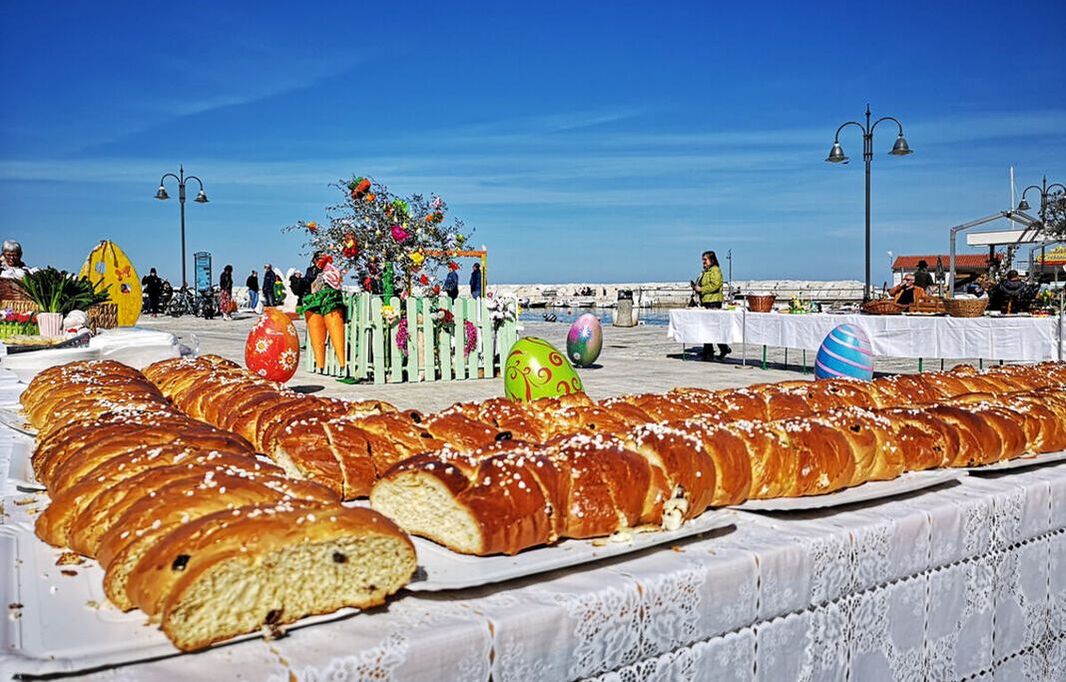
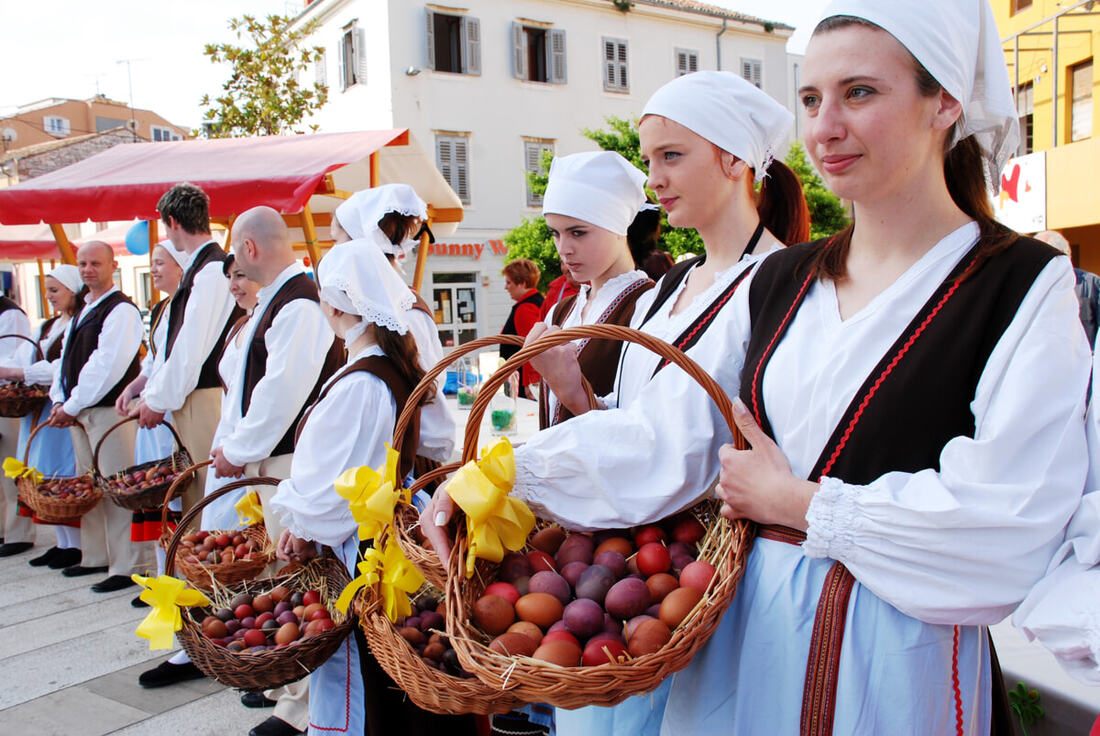
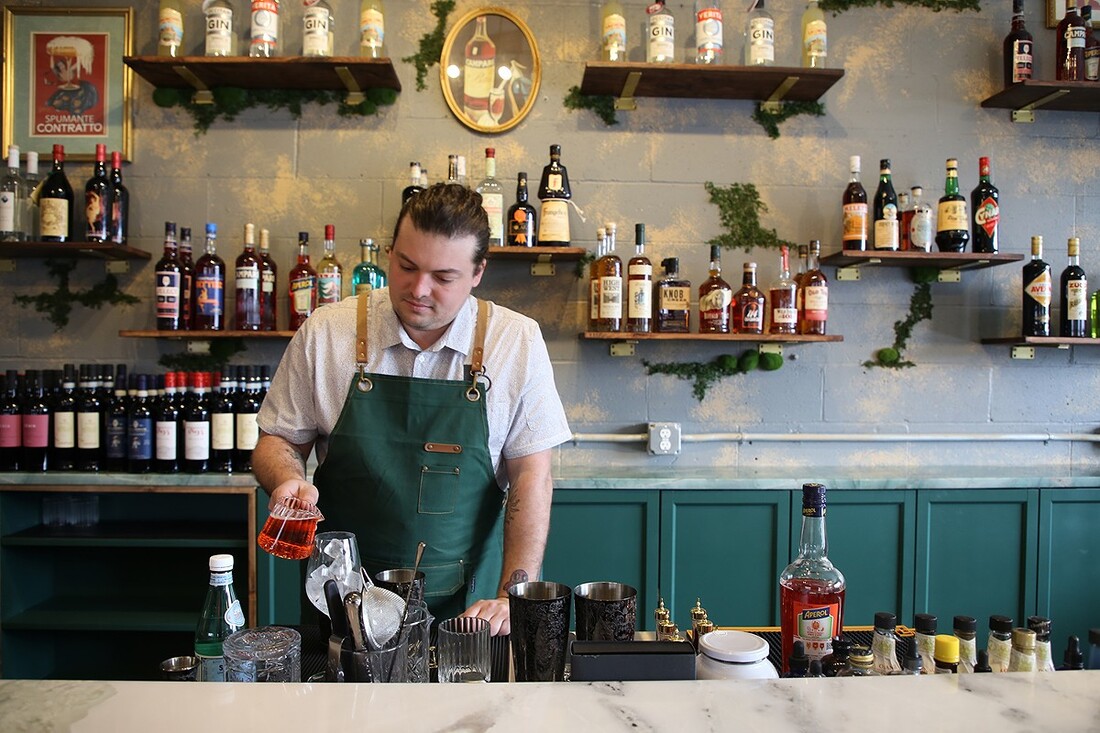
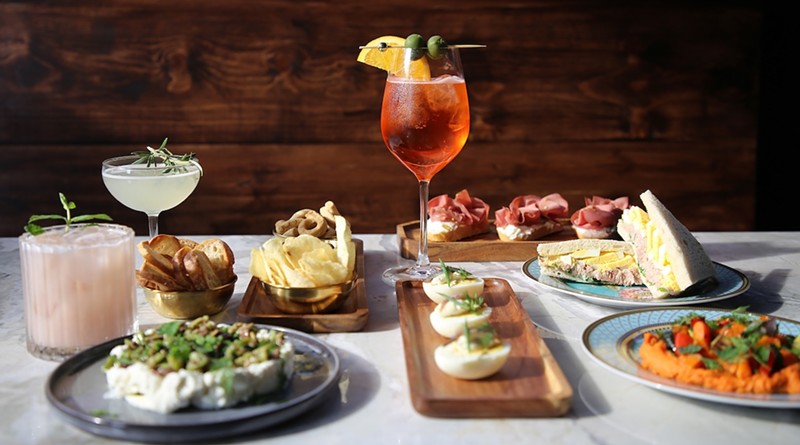
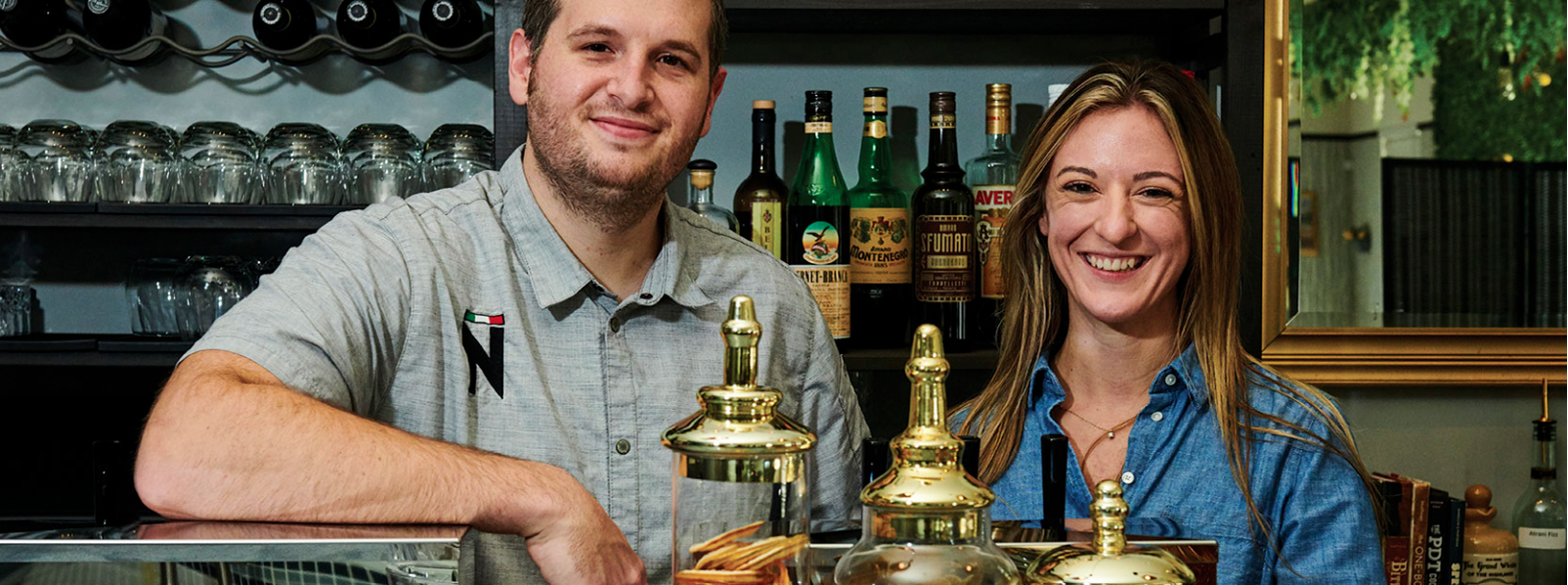





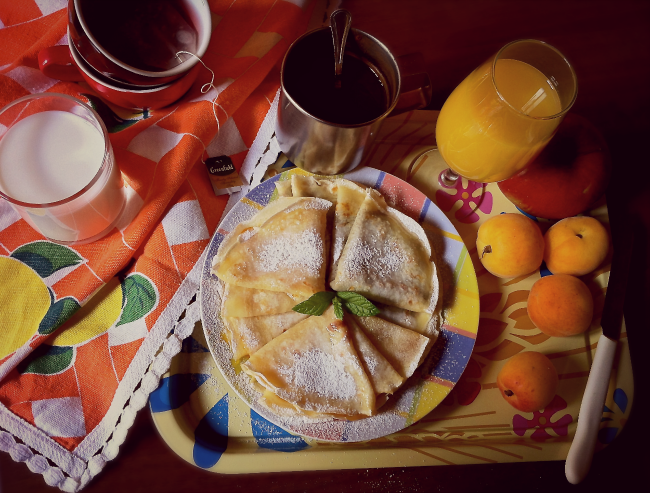
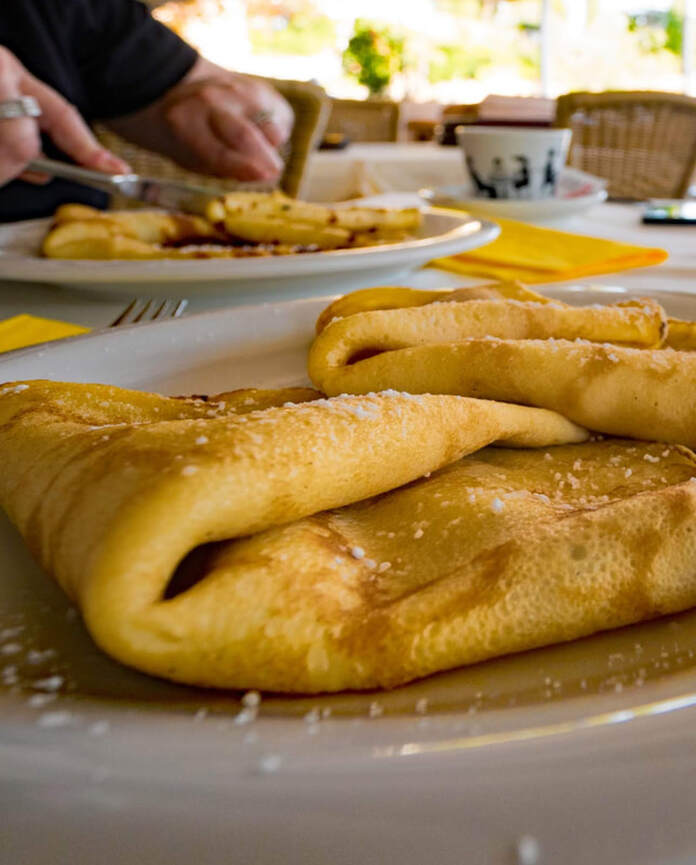
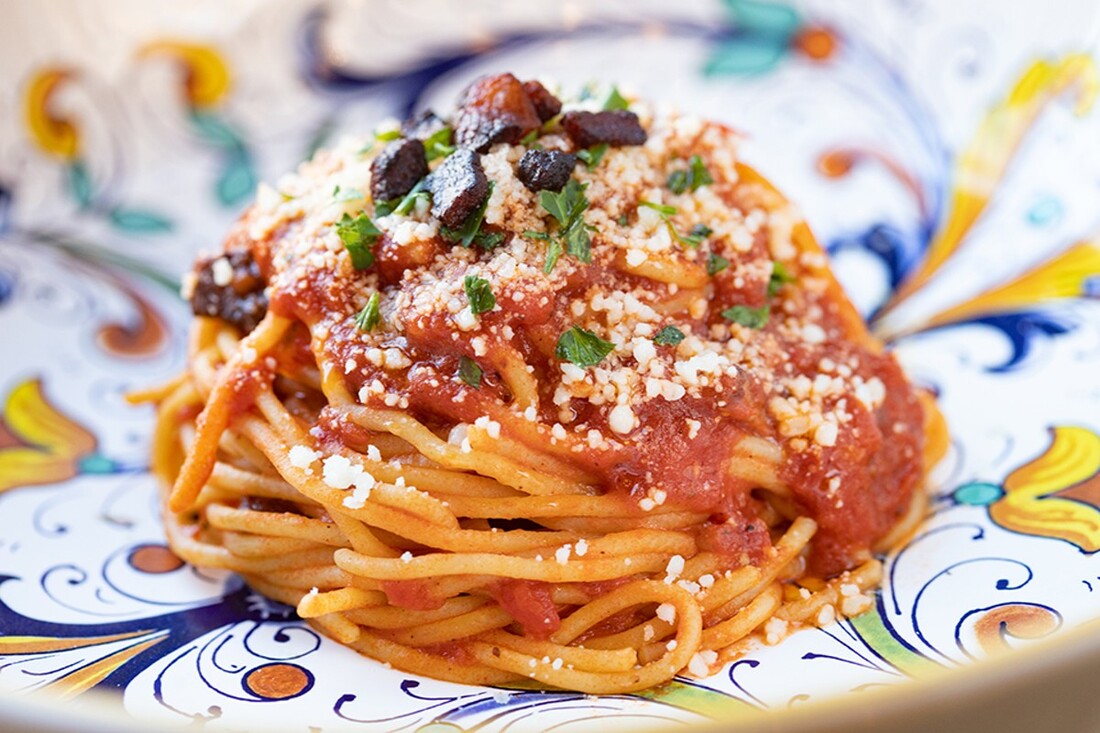

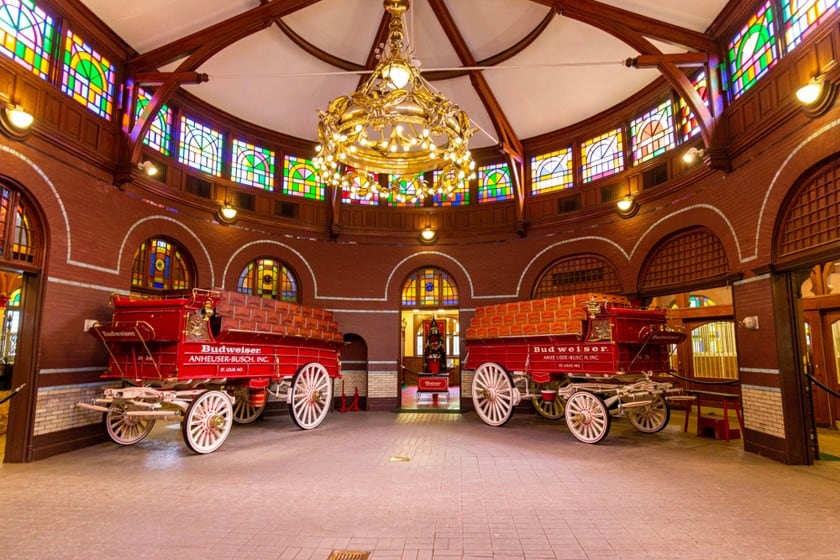

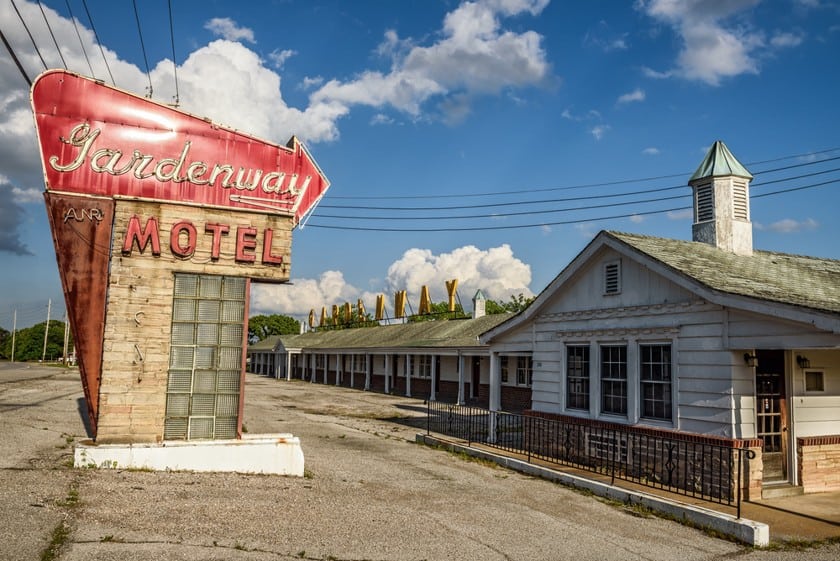


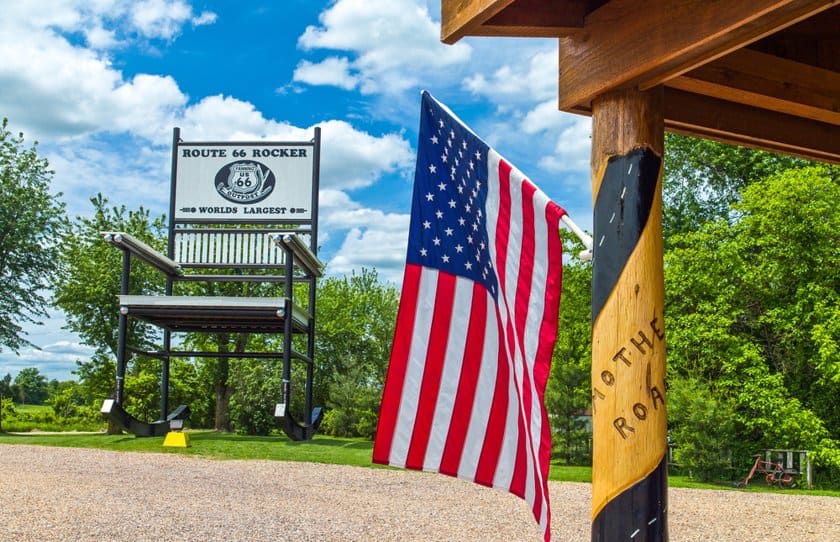
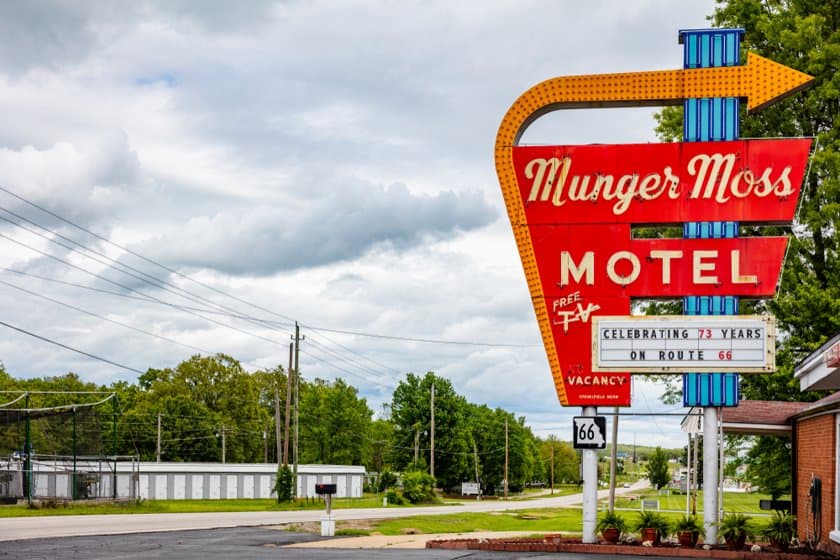

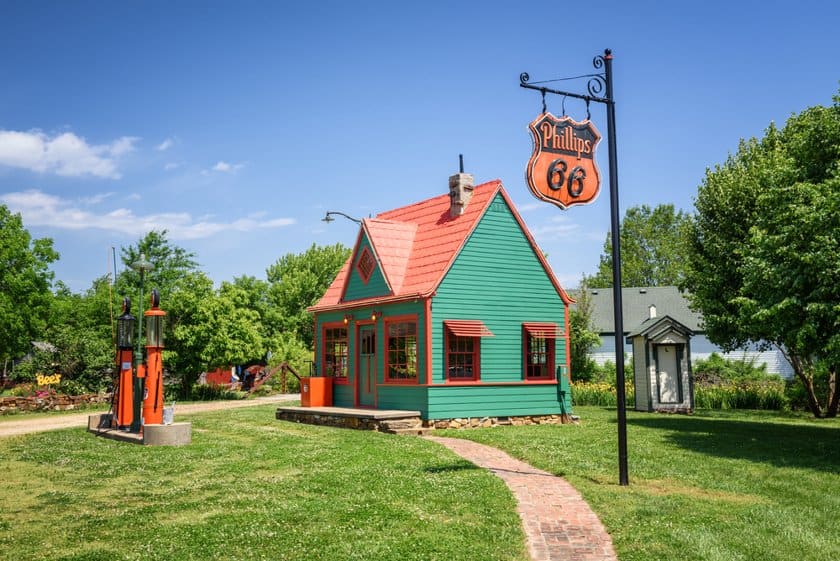
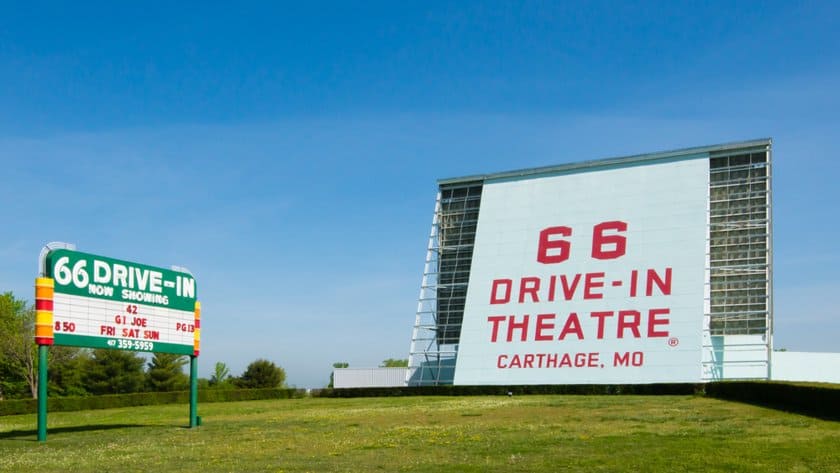
 RSS Feed
RSS Feed
